Stewart Island Part I
As I mentioned in my last post, we had the rare luxury of private rooms in Te Anau, so that was a lovely night’s sleep there. Unfortunately, we didn’t get to savor it for very long because we barely had time to eat and shower before bed. Then it was hitting the road again early in the morning. Too bad. Needless to say, we were all pretty quiet and sleepy on the way to Bluff, where the ferry for Stewart Island heads out. We had to be there by around noon, so that left us a few hours of traveling.
The way it works with Stray is that you have the option of doing Stewart Island if you want, but it’s not really part of the major route. Everyone not going onto the island stays behind in Invercargill for the day, the last major town on the South Island. It’s a nice enough place, but there’s really not much in Invercargill. Has anyone seen the movie World’s Fastest Indian with Anthony Hopkins? Yeah, it’s a really obscure, underrated film, but it’s about an old guy on a beat-up motorcycle trying to top the land-speed record in Utah. Really nice, inspirational film. Anyways, the real-life character behind that story was from Invercargill, so he was something of a legend there. If I’d had time to explore around the city a bit, I would’ve tried to find the museum where they keep his bike, but we were literally only stopped there for coffee. It would’ve made more sense to just drop all the Invercargill people off there and take the few people going on to Bluff, but I guess the hostel wasn’t ready yet or something. It was only 10 o’ clock in the morning, so that’s understandable, I suppose.

The tagline for World's Fastest Indian
I was pressed for time in Invercargill because Stewart Island is a little bit…insular, to say the least, and doesn’t have a bank. At all. It’s really only one small township of 400 permanent residents with one general store, a weekly postal service by boat, and just a kilometer or two of paved road. Due to this, I had to take out quite a large sum of cash in Invercargill because there’s no guarantee of Eftpos cards working on the island. The only problem with this plan was that there didn’t seem to be a Westpac bank anywhere near the main courtyard area we were parked at. They had ASB, BNZ, ANZ, KiwiBank, National, and even a Western Union on the same block, but no Westpac. So I had to literally jog four blocks before I spotted one and then race back to the bus before they left without me. Therefore, my impression of downtown Invercargill was one large blur of buildings as I ran past them.

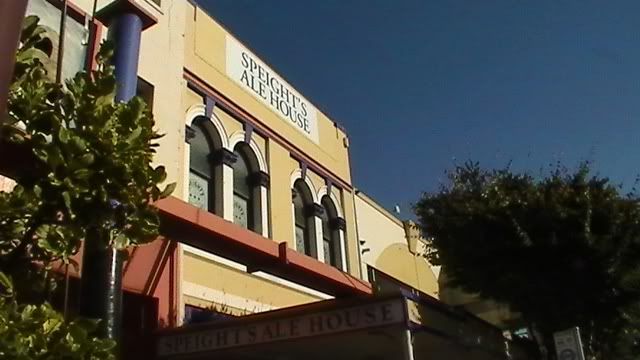
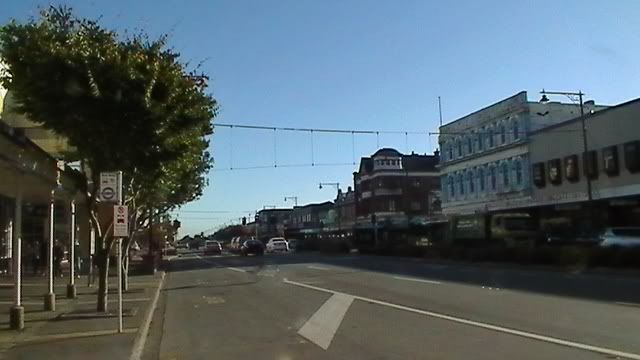
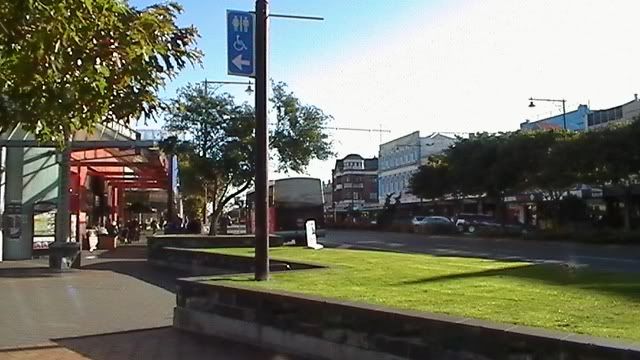
Downtown Invercargill
I was able to look at a cool clock tower in the main square, though. When it chimes the hour, you can see all of the little gears going around inside because it has a see-through panel at the base. I managed to snag a quick scone and coffee while watching that. There was one really strange thing going on, though. For some inexplicable reason, the entire breadth of Invercargill was covered with American flags. I felt like I was back in the States…for Fourth of July weekend. It was so gaudy and over-the-top that the whole thing was very surreal. EDIT: Okay, I just looked it up online and found out that it's some sort of event called AmeriCARna, where a bunch of people who own American classic cars drive up and down the country on a giant road trip. Ah, the wonders of the internet. Then it was back on the road again to make in time for the ferry.
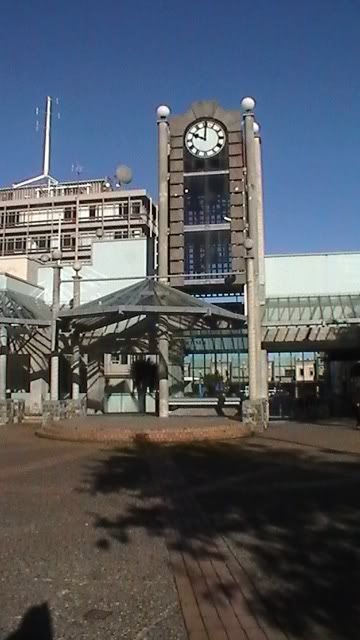
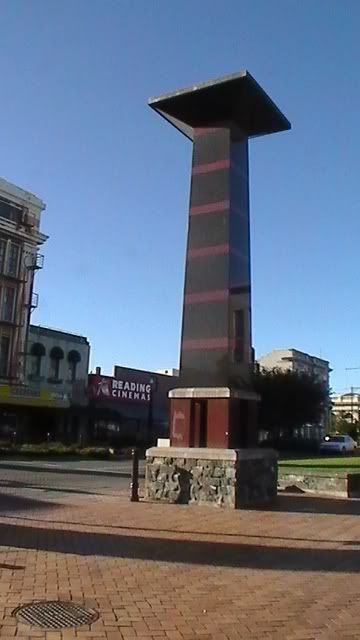
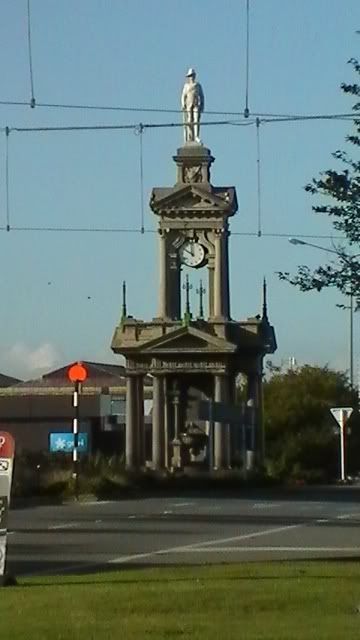
Clock tower plaza of Invercargill
I have to say that the Southland area of New Zealand is quite different from the rest of the country. If I had to compare it some other place, I think it would have to be Montana or Wyoming, even though I’ve never been to either of those places personally. Geographically, it reminds me a lot of the area around Sacramento - that flat, farmland kind of terrain with lots of rustic houses and silos all over the place. The people in the area, however, are more of the “hardy high country folk” variety that you get in certain Australian movies about horseback riding. If you order a cappuccino or something fancy like that, they kind of look at you like you’re some sort of lunatic who wandered in off the street. On the way up to Christchurch, I ran into an honest-to-God sheep blockage taking up the road as far as the eye can see, but that’s a story for another few posts.
The little town of Bluff is the absolute last town on the South Island and is known for one thing and one thing only: oysters. Each year, there’s a big oyster festival that people travel at least dozens of kilometers for, and the running joke is that nine months after the festival, the maternity ward in the local hospital has its busiest month of the year. It’s a quaint little harbor town with lots of fish, boats, and sea spray, and we got there just in time to take in a bit of the scenery before the ferry arrived. It was a bit of a sad moment, however, because it meant saying goodbye to the last stragglers of my original Stray bus crew. With the exception of Mirva, they were all staying overnight in Invercargill before moving on to Rangitata, so it was the last I’d see of all of them. Since they’d all been gradually trickling away anyway, though, it wasn’t as bad as it could’ve been.
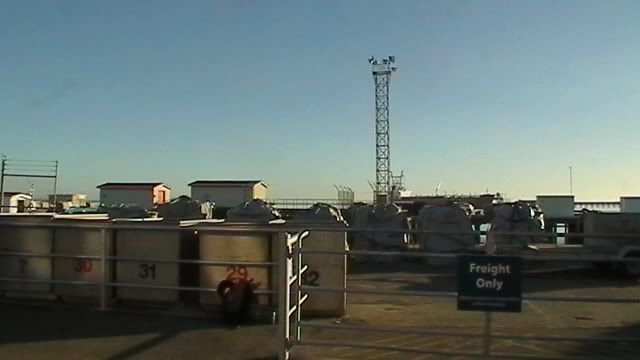
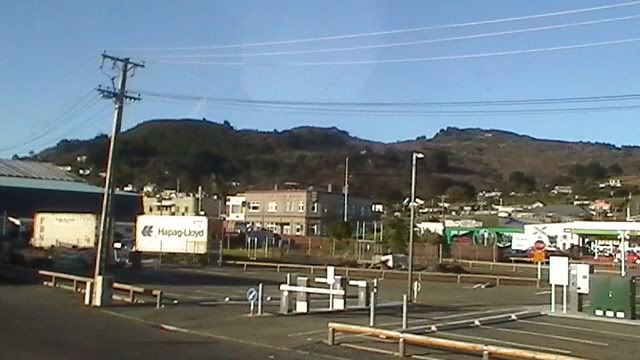
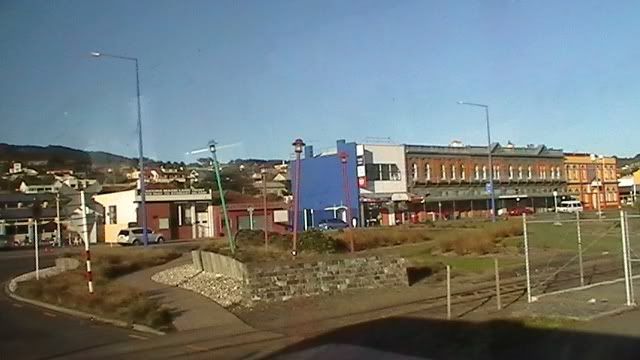
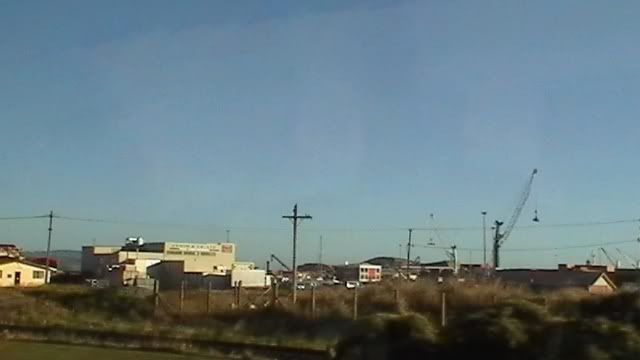
The quiet town of Bluff
Anyways, the bus eventually drove off, and we all exchanged a few bittersweet waves before they disappeared from sight. Then it was just me and Mirva waiting around for the ferry in the harbor. During this time, I happened to mention to her how I’d heard about the great sea kayaking that can be found in Stewart Island. I’d wanted to go when I was in Abel Tasman, but since I was only staying there for one night, I was limited on what I could do. Back then, a woman at the travel desk had recommended Stewart Island since it supposedly has these great jungle area with the ocean going right into the trees, so I’d not gone sea kayaking anywhere else in the assumption that I should save it up for Stewart Island. Now, immediately after relaying this to Mirva, I happened to look over my shoulder and see this absolutely massive poster of a great white shark attacking someone in a shark cage. …yeah, okay. I didn’t let that put me off. So, right, yeah, apparently they have shark cages available for people with a death wish. That’s cool. It’s not like there are a ton of great whites around, and I’m sure they’re way, way out to sea. Surely nowhere near the beaches or anything like that. What then ensued was a gradual decline of hope which was almost comical in nature. First, the skipper welcomed us aboard by informing us that Stewart Island is, in fact, the third most common place in the world to find Great White Sharks. ...okaaay, that's really not good, but I was still keen. Then he elaborated by saying that it was going to be especially bad that week because scientists were planning on tagging them for research, thereby attracting them even closer to land than usual. Huh. Finally, as the icing on the cake, the guy at the tourist information center told me that, oh yeah, they actually swim around pretty close to shore and are known to hang out right next to town. That does it. Needless to say, I did not go sea kayaking at Stewart Island, even though I'm sure it would've been amazing. Oh well.
Back to the ferry. The ride itself was pretty standard with us looking out at the ocean through the windows and our guide pointing out various landmarks. It took roughly an hour to cross the Foveaux Strait to the island, which is 22 nautical miles or 39 kilometers off the shore from the South Island. While we're in transit, I might as well tell you guys a little bit about Stewart Island, huh? The actual Maori name for it is "Rakiura," which means "The isle of the Glowing Skies." This is probably because some of the best sunsets in the world can be seen from Stewart Island, especially when the Southern Lights are in effect. Yeah, you know that little thing called the Northern Lights? Well, due to an anomaly in the magnetic latitude contours (I know, right?), it's the perfect spot for seeing the Aurora Australis, its cousin, when a magnetic storm is in the area. Here's an image of it that I borrowed from Google.

Southern Lights of Rakiura
Another reason it might be called "Glowing Skies" because it's supposed to signify this dude named Rakitamau getting rejected by a pretty girl. I guess this guy asked the island chief for the hand of one of his daughters but was refused. When he asked about the second daughter, he was rejected again, so he was forever embarrassed about the whole thing. Personally, I think he should just suck it up and move on, but I guess he's a bit mopey or something. One of the most popular Maori creation stories about New Zealand involves a guy named Maui fishing around with his brothers. With a magical jawbone as a hook, he managed to catch a massive fish and pull it up to the surface. That fish became the North Island, and his great canoe became the South Island. Stewart Island was supposed to be the anchor stone of his canoe. If you look at maps of New Zealand and tilt your head a bit, you can kind of see where they were coming from. Anyways, in tribute to this famous story, there's a giant chain sculpture that starts at Bluff, disappears down into the ocean, and then reappears on Stewart Island.


New Zealand as the canoe, big fish, and anchor, with the chain connecting it all
Today, the only real town on Stewart Island is a place called Oban, which also goes by the name of Halfmoon Bay. Back in the 1840s, a few hardy settlers tried to colonize other parts of island and build saw mills throughout the area, but they were all eventually abandoned. Oban was the only one to actually survive into the present, but there are apparently old, rusty buildings scattered across the island where the old settlements used to be. Mainly, though, Stewart Island is a wildlife sanctuary that has come to represent what New Zealand used to look like thousands of years ago, before humans came and messed it up. The main part of the island has been contaminated with various flora and fauna not native to New Zealand, just like the rest of the country, part there are several other minor islands that have been pretty much completely preserved. Ulva Island is the most well-known one, but I'll go more into that on Part III. Above all else, Stewart Island is the one place where you could possibly run into a kiwi bird in the wild, but they're so shy and hard to spot that it's almost impossible unless you know where to look. Locals are very strict about enforcing a ban on possums, rats, and feral cats to protect the habitat there.
Okay, enough of the history lesson. We arrived at Oban just around 12:30 or 1:00 and managed to locate our bags without any obvious difficulty. I had heard about a really nice hostel called Bunkers Backpackers with free wireless internet somewhere on the island, but they hadn't answered any of my phone calls when I'd tried to get in touch with them in Te Anau, so I had to settle for Stewart Island Backpackers for the first night instead. I managed to walk down to Bunkers later in the day and reserve the next two nights, however, so that was a good move. Mirva, however, had a bit of a problem. Unlike me, she was on a deadline and was only staying on the island for one night. Her whole reason for visiting Stewart Island was to find some friends of hers who were working at the only restaurant in town. I want to say they were from Austria, but they could've been German as well. Anyways, she just wanted to pop in and say hi to them, so that meant being gone early the next morning. Since it was already midday, that left her with only a few options. Our first order of business was to check in at the hostel and drop our things off there, but that didn't take long at all since you can see the entire town in all of fifteen minutes. Then we walked back to the information center to plan the afternoon's activities. She had been hoping to see Ulva Island or sign up for a hiking tour, but, unfortunately, most of the tours were already gone for the day or needed a minimum of three people to get going. She was understandably bummed about that because Stray hadn't mentioned anything about most activities taking place in the morning, but there really wasn't anything that she could do. The only thing still available to her was a bus tour around the main parts of town for an hour and a half, which was around $50-$60 dollars. She asked if I wanted to come, too, but I decided against it since I'd have three days to see the town and didn't want to shell out that kind of money for the sake of polite company. Luckily, she understood and decided to go do that for the first bit of the afternoon, leaving me to my own devices for exploration time.
As I mentioned before, the main part of the town consists of a general store, one or two small cafes, the tourist information center, and a sprinkling of other businesses thrown into the mix. Mirva's friends worked at the South Sea Hotel right on the waterfront, but their menu was far too expensive for my tastes. I was more partial to the Fish and Chips shop down the beach run by a cute Asian woman and her very tall German boyfriend. Oban has this great "island life" vibe to it where time seems to move at a slower pace. Just like any isolated village, everyone knows everyone's business, no one seems in any particular hurry, and people just tend to appreciate the simpler things in life more often. One example of this was the large blackboard hanging outside of the general store. After asking around town a bit, I learned that the owner has a list of everyone's birthday on the island, so whenever that day rolls around, he writes their name and age down on the sign as a sort of congratulations. Then there's the giant chess set right across from the beach for the locals to entertain themselves with and the multitude of small boats floating in the harbor nearby. All in all, it was a very peaceful atmosphere.
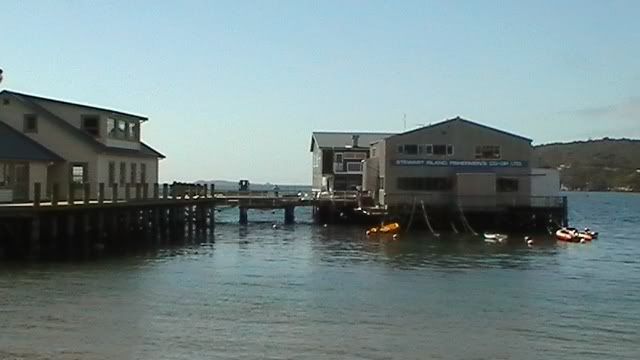
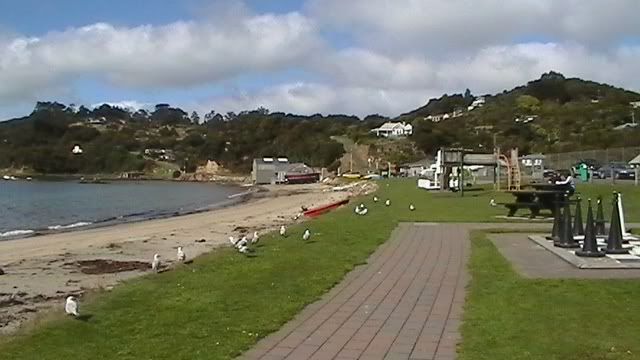
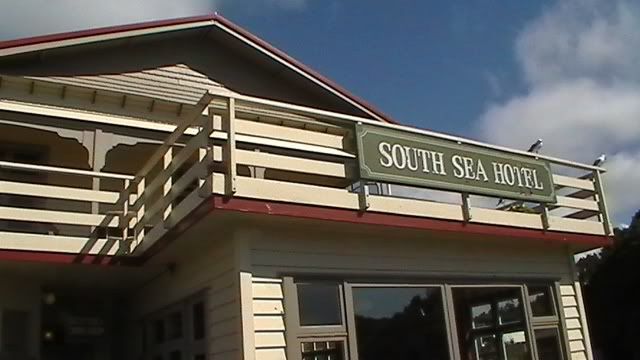
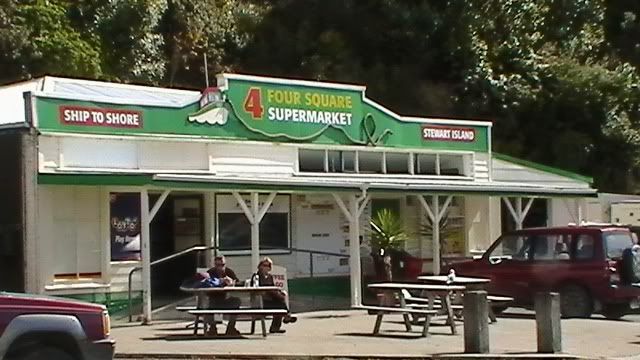
The hotel, general store, and the beginning of the waterfront
I spent a good chunk of that time in the tourist office, planning out my time wisely and deciding on the best walks to take around the island. The big, multi-day hikes were out, obviously, but I managed to glean which tracks were the best by asking some of the local guides for advice. After marking down the possibilities on my map, I tucked that into my back pocket for the next day. That gave me the rest of the afternoon to enjoy Oban and eventually meet up with Mirva again. I desperately wanted to sign myself up for the kiwi bird night tour on Ulva Island, but that was way out of my price range. Considering that they only come out in the middle of the night and are terrified of people, I had virtually no chance of getting a picture of one without flash. My camera works marginally in full daylight, so there's no way that it would work in pitch darkness. Oh well. I held out hope for accidentally running across one instead - after all, they do sometimes wander close to town on occasion. Onwards.
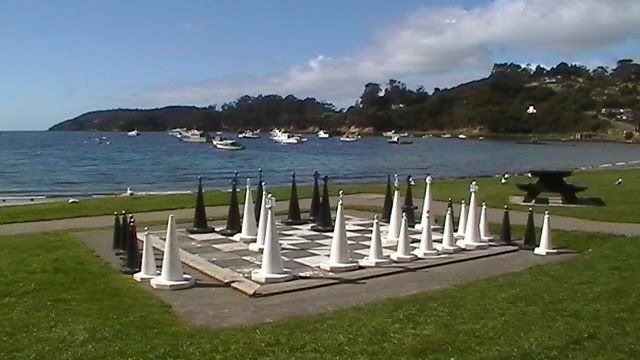
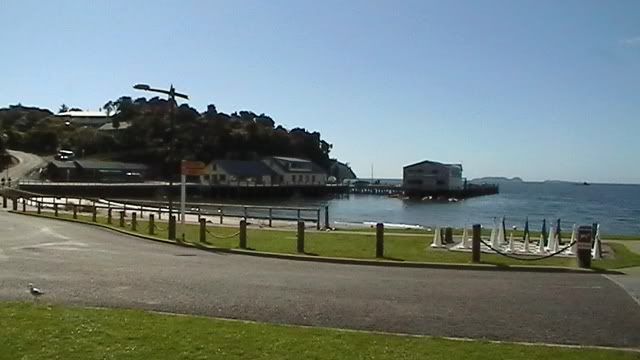
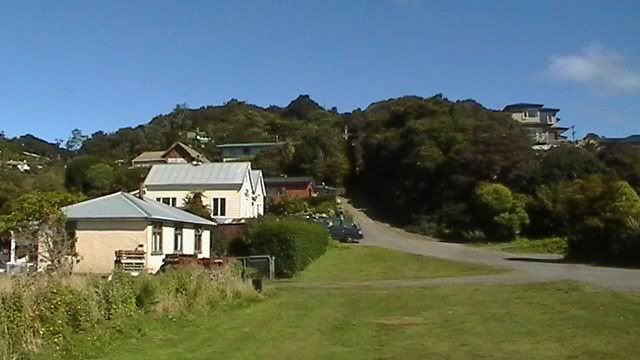
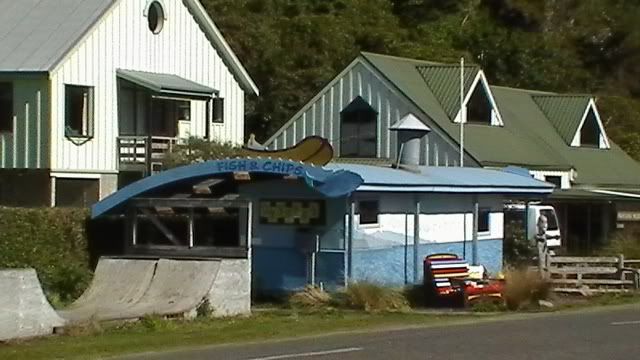
The giant chess set, fish and chips shop, and a few back roads
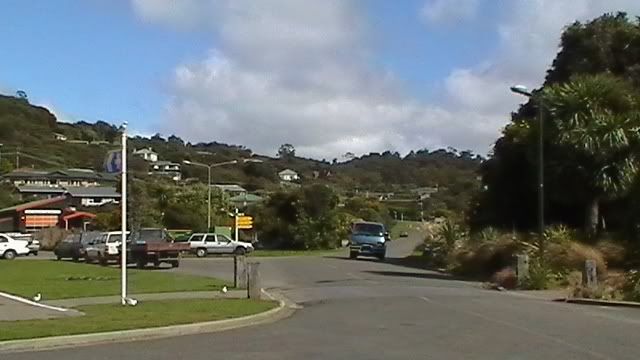
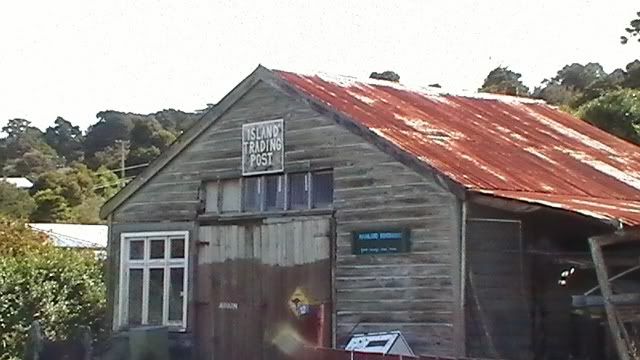
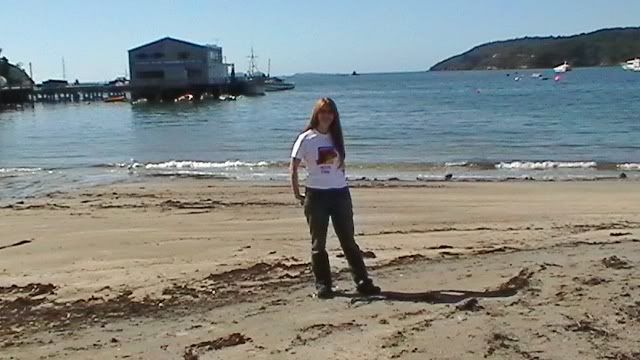
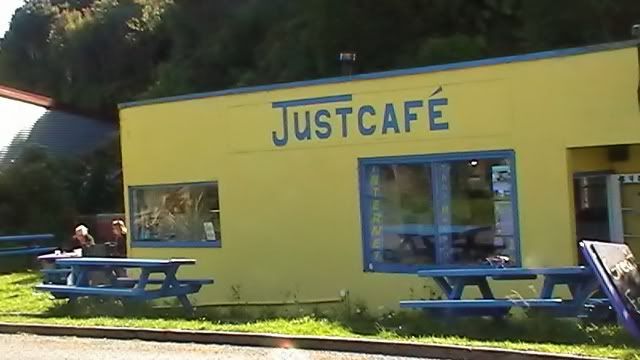
Getting a bit deeper into town
Another thing I absolutely loved about the quiet, island lifestyle was the sense of humor involved. Locals there know that they were way out in the middle of nowhere and that they do things a bit differently from the rest of the world, so they make no secret of poking fun at themselves. After all, the guy that owns your hostel might also be the guy that does sea kayaking and runs the bus tour company with his brother, and his wife might double as a tour guide when she's not running the accounts. With that level of personal involvement, most people tend to know just a little of everything that goes on in town. As a result, they like to mess with tourists and gossip like crazy. Here are just a few of the humorous things I found scattered across the general area of Oban. I would try to describe them, but I think they rather speak for themselves.
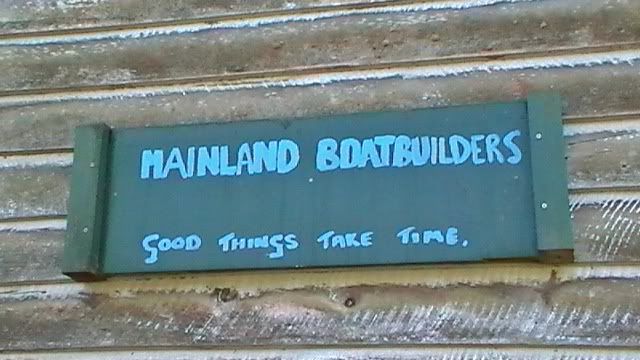

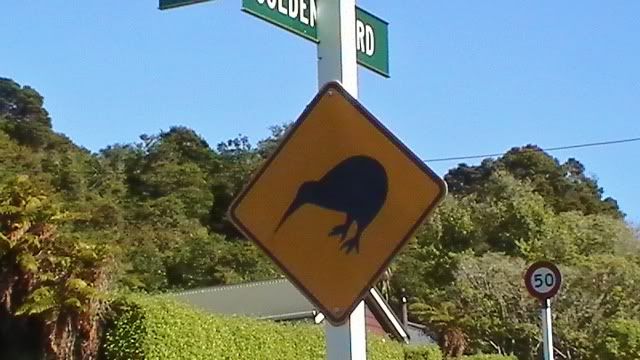
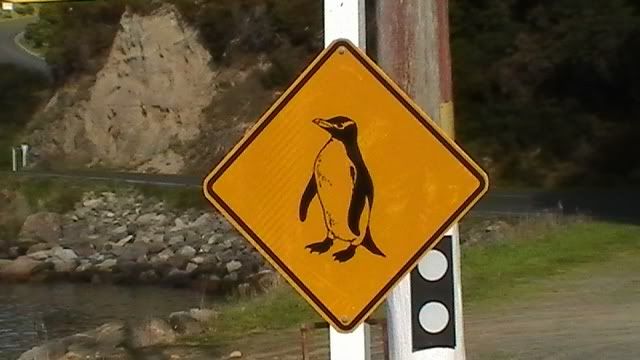
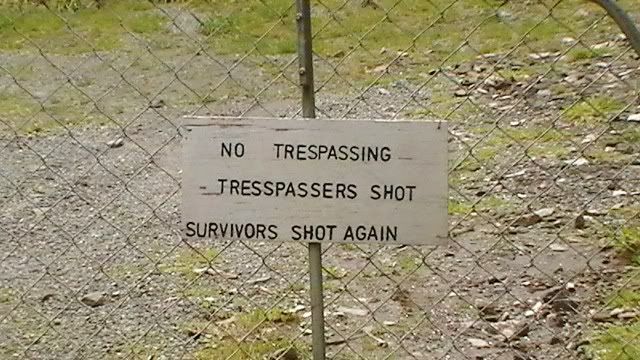
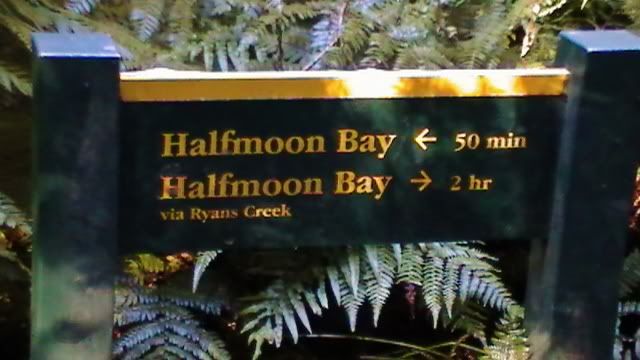
Oh, New Zealand, how I love you
Since I was stalling for Mirva, I stayed around the general beach area and didn't go that far into the surrounding forest. I was hoping that she'd be down for heading up to a spot called Observation Rock around twilight time because it's supposed to be the best location for watching the sunset. With that tentative plan in mind, I dawdled around town and took some more pretty pictures of the water. There was a war memorial for fallen soldiers right on the beach that had a nice inscription on it, so I snapped a few shots of that. I still can't believe the ratio for war casualties in New Zealand. Literally every town has some sort of tribute marker because NZ has incredibly high death rate for the various wars it has been involved in. WWI was around a 58% casualty rate, and New Zealand had the highest in the commonwealth for WWII, so a lot of families were affected.
Another thing that I found in abundance along the beach was the friendly oyster catcher. They're these cute little black and white birds with long, orange bills for breaking open mollusks, and they were all over the place. When you're walking along the beaches of the South Island (where there are tons of them as well), you have to be very careful not to step on any eggs because they apparently nest in the sand.
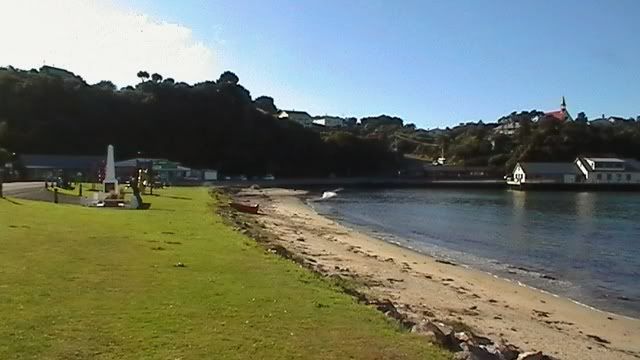
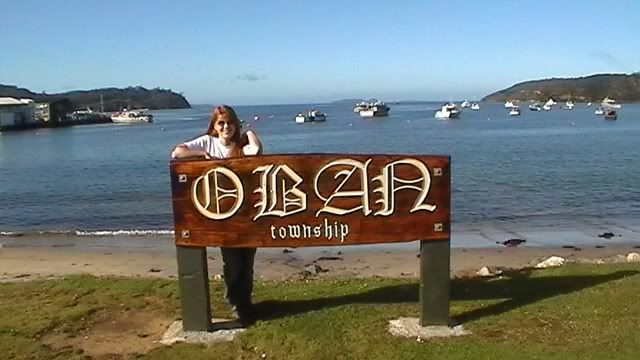
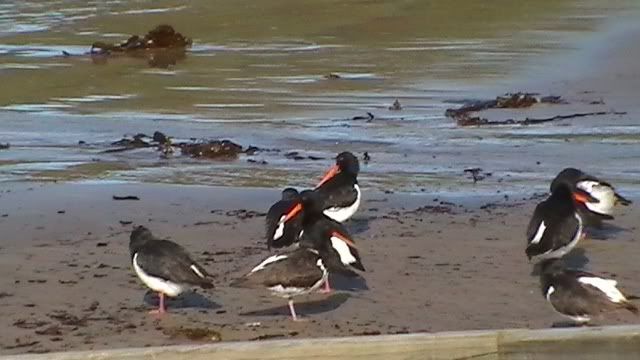
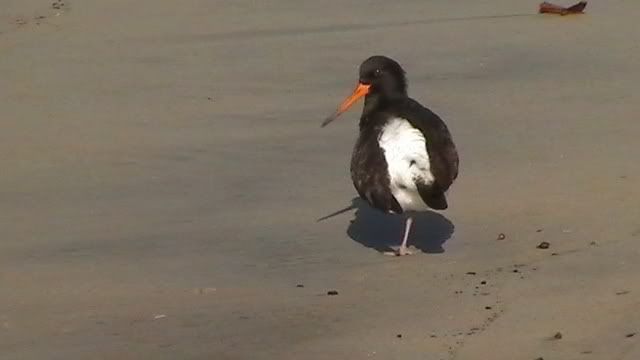
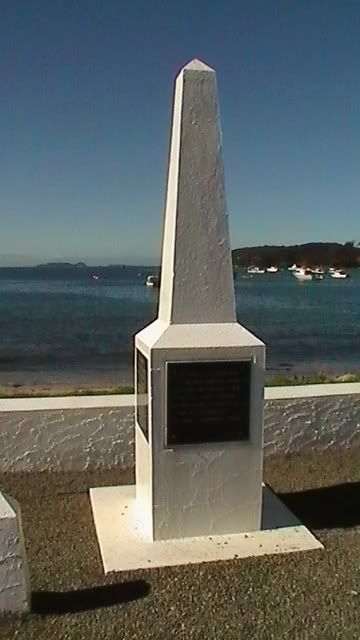
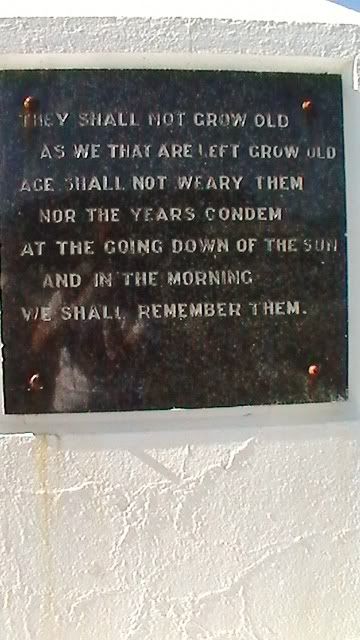
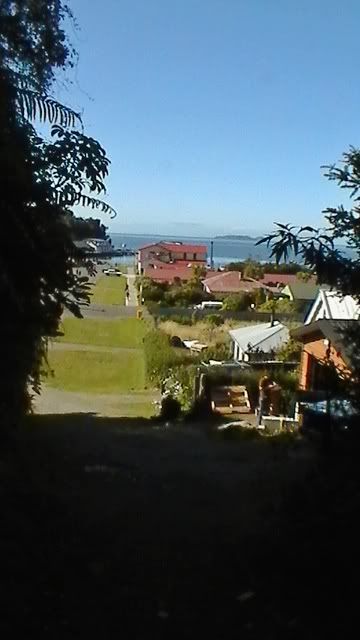
Ocean, oyster catchers, and memorials
Before long, it was time to reunite with Mirva following the completion of her bus tour. Luckily, she managed to enjoy the ride and learn as much as she could about the island in a limited amount of time and was past her disappointment in not being able to reschedule her ferry departure for a later date. She was down with my idea for sunset watching later in the evening, so we deciding to do some walking through the short forest paths nearby to kill some time first. After consulting with my map, I decided that the best one to start with was the Fuschia Walk just behind our hostel leading up towards Observation Rock. Again, the name comes from that Maori loser who got dumped...twice. By that point, it was about mid-afternoon, so we had at least three hours of exploring to do before sunset. The Fuschia Walk is supposed to take all of fifteen minutes because it's just a little pathway connecting the back end of town to a grassy field area, but we decided to start there and then work our way around the bay before dinner time. You can go pretty much anywhere in New Zealand and find some amazing forests or jungles, but I think Stewart Island takes the cake when it comes to the exotic. In the entire time that I was there, I could never really compare it to anywhere else I've been to because the trees and landscape were so unique. The pictures don't really do the place justice, but I'll give you guys a taste.
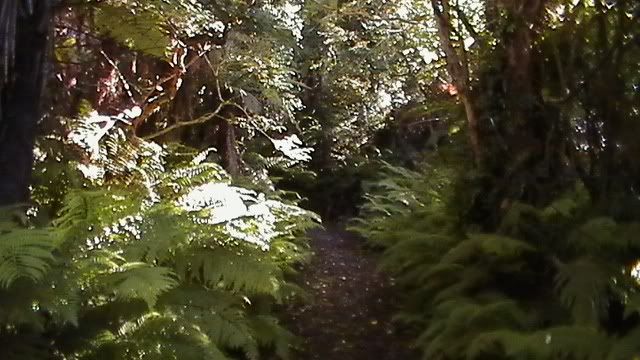
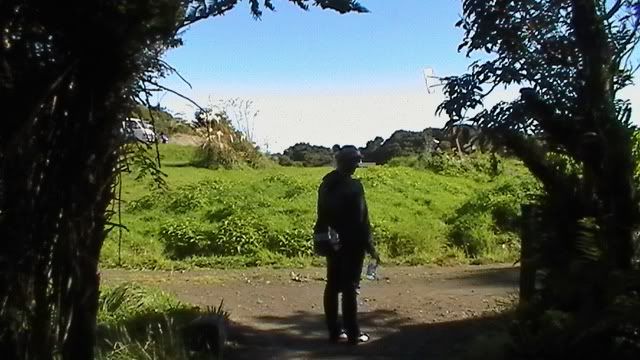
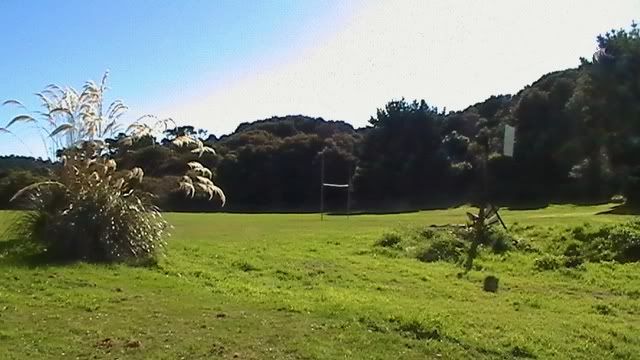
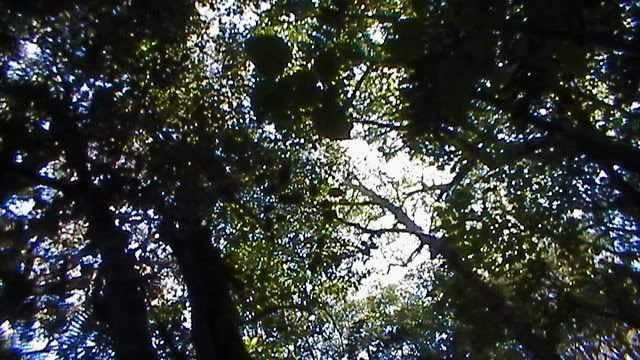
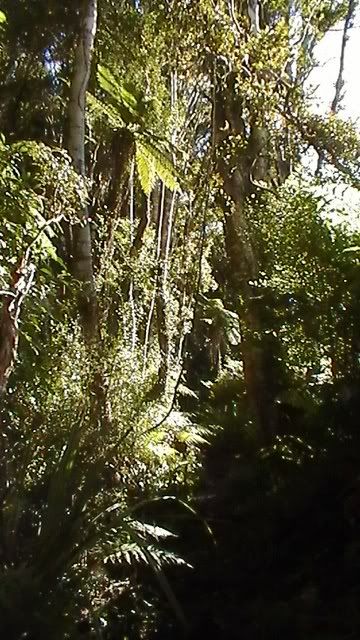
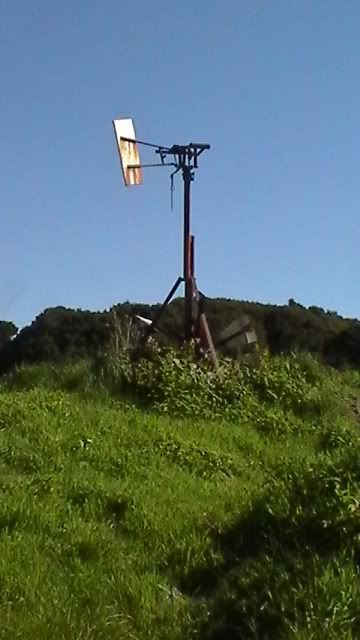
Coming out of the Fuchsia Walk and walking through the trees
I have tons of other forest shots from throughout my time on the island, but I'll save those for the next two posts so that I don't get ahead of myself. After walking around the back part of town, Mirva and I hiked a bit further up hill and found the location for Observation Rock. We made a quick note of where it was so that we could find it again later and then continued past it towards Golden Bay. That particular walk is the start of another longer trek out to Deep Bay or Ringa-Ringa Point, but we didn't have four hours on our hands. A lot of boats launch out from Golden Bay or dock there when they're not in use. I think the mussel farms and fishing spots are nearby as well, so a lot of local fishermen hang out around Golden Bay, too. Anyways, the sun was starting to get a bit lower in the sky, so we had incredible lighting for some scenic views down there. We lingered there for quite a while, actually, just enjoying the tranquility of the water.
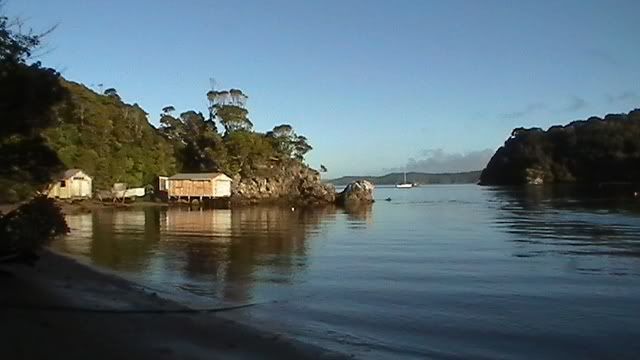
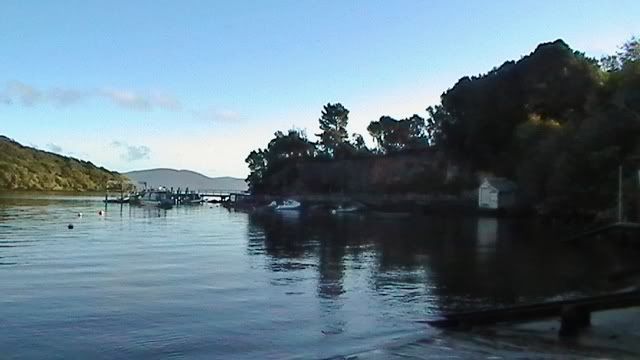
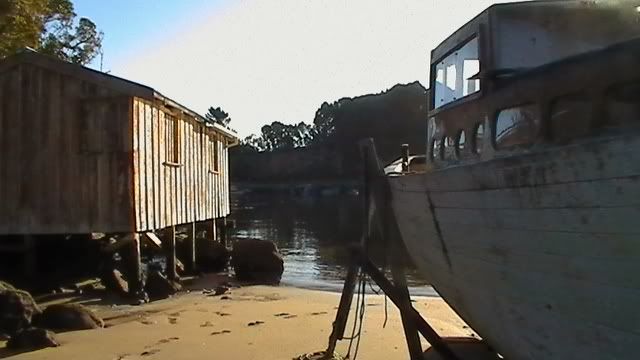
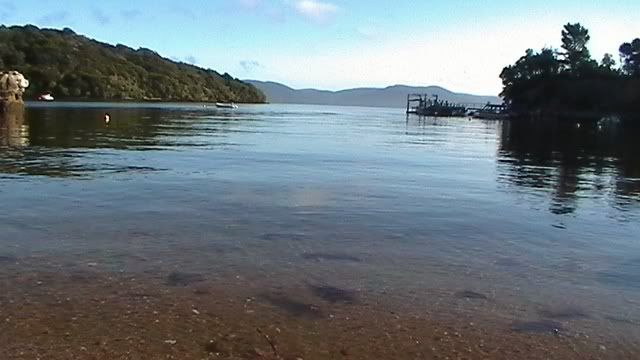
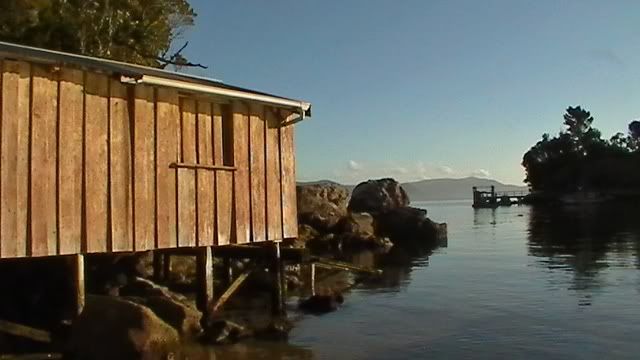
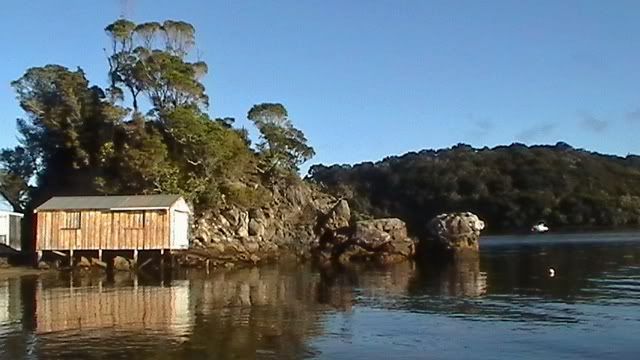
Some awesome twilight shots of Golden Bay
After Golden Bay, we decided to keep walking in the general direction of Deep Bay since that path went towards town but ended up turning back after the sun started getting a little too low on the horizon for our comfort level. While he were walking along, however, we were incredibly fortunate to stumble onto two kakas playing in a tree directly above us. Now, kakas are large parrot-like birds that are extremely cute and playful. They basically enjoy destroying trees with their claws and making all sorts of racket. After sunset, they are everywhere on Stewart Island, and their war cries remain the predominate soundtrack of the place when I try to remember what it was like. They make this sort of screechy, warbling noise that sounds like a cross between a maraca being shaken and Gilbert Gottfried being strangled, but it's actually not quite as annoying as you would think. Anyways, as we were chatting away, I happened to glance ahead of us on the trail and see another backpackers girl transfixed by something in the trees up ahead. With a sense of something is up, I did the full closed fist "halt" gesture that's in every cliched action flick ever and cut off what I was saying mid-sentence. And, sure enough, my instincts paid off because they stayed put even after we'd finished approaching. Did I mention that they were cute? Adorable, even. They just continued happily tearing this poor branch apart while we stood underneath and snapped an insane amount of pictures. Then they sidled up against each other and "kissed" a little bit with their beaks. Aww. I don't know why I didn't take a video clip - must have been too transfixed by our luck.

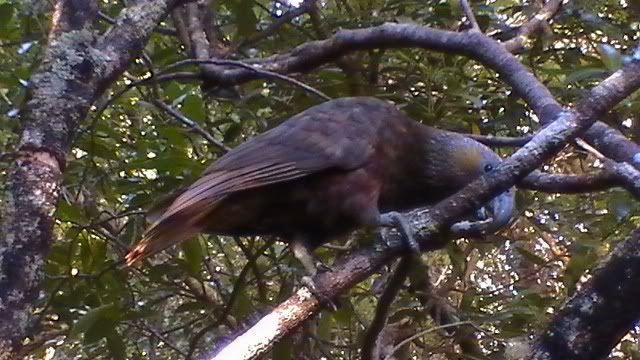
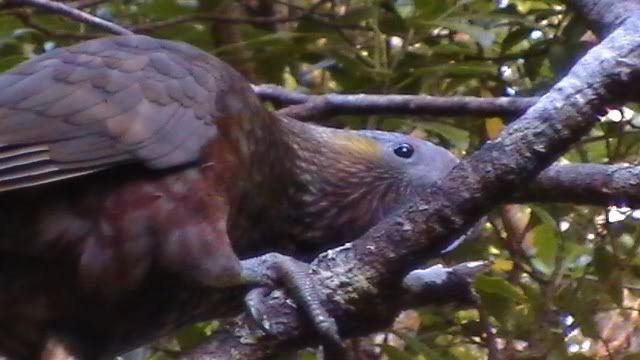
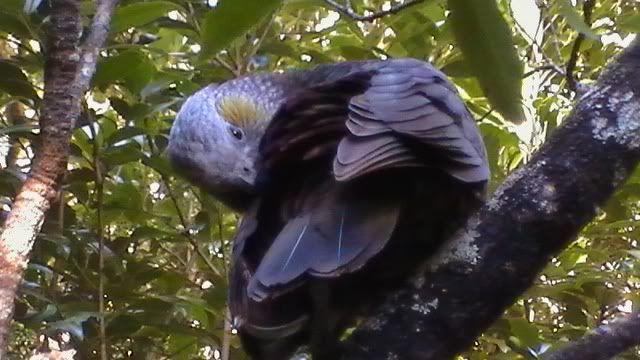
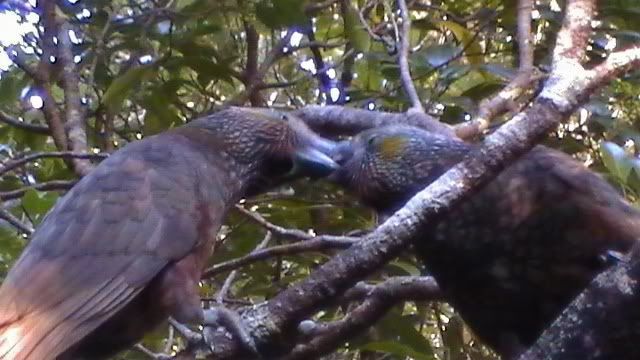
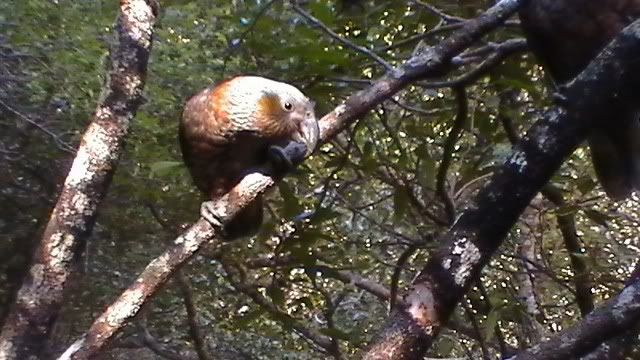
Kaka birds being adorable
We could have stayed there and watched them for ages, but we decided to give the cute couple some privacy and continue on the trail for a ways. Since we wanted to be in place for sunset, however, we didn't get that much further down the path. We went far enough to get some scenic shots of the water through the trees before retracing our steps and heading back towards Golden Bay and Observation Rock. By the way, it's not actually a rock - more of a gradual hill that spirals up around several backyards with a nice view of the western side of the island. We made up there without any problems, and there were only two other people up there, so it wasn't exactly quiet. Then it was time to just sit back and wait.
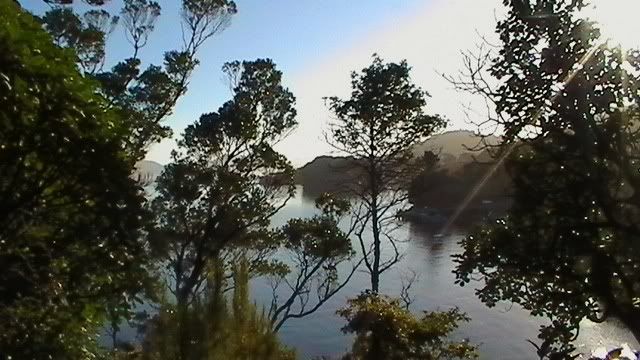
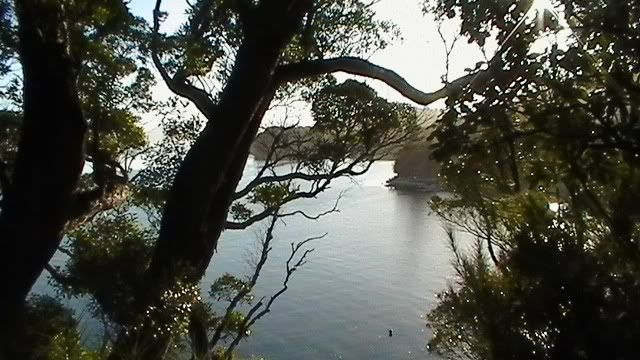
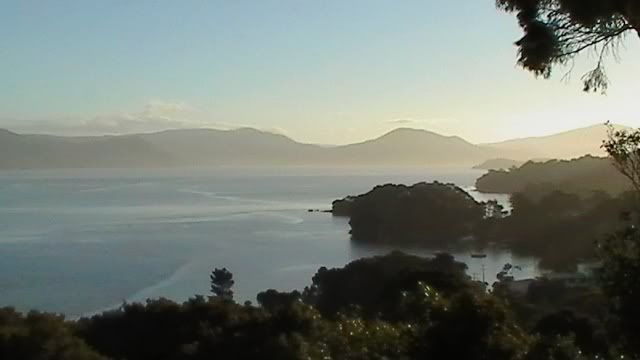
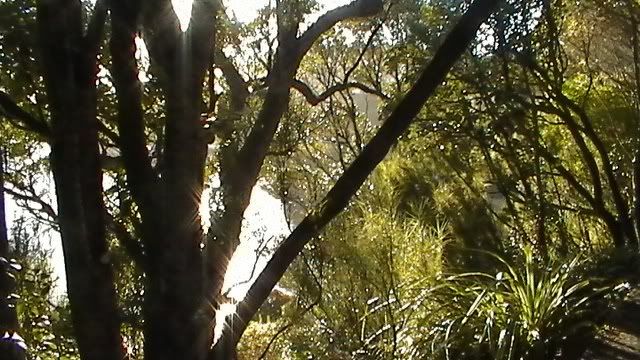
Between Golden Bay and Deep Bay
Luckily, we didn't have to wait very long. Within half an hour or so, we were in the perfect spot to relax and take pictures at our leisure every few seconds. That's actually part of the reason why this post was such a pain to finish - I literally have about fifty identical shots of the same view, so it was extremely difficult to sort through them and pick the top ones. I think I've finally narrowed it down, though, so feel free to browse through some of the best photos. One of the coolest things that I noticed was this faint pillar of steam/smoke rising from one of the ridges. At first, I assumed that it was someone's chimney across the water or maybe a natural hot spring releasing some mist in the air, but then I zoomed in and realized that it was some sort of natural vapor rising straight out of the ground, made visible by the fading light. Can anyone explain why this might happen? I'm not exactly a scientist, so that was pretty cool, in my opinion. Before long, however, the sun gradually sank below one ridge in particular, and the sky began to fade into more purples and blues. We stayed up there just a little longer, admiring the scenery and enjoying the tranquility, but then it was time to head back towards the town.
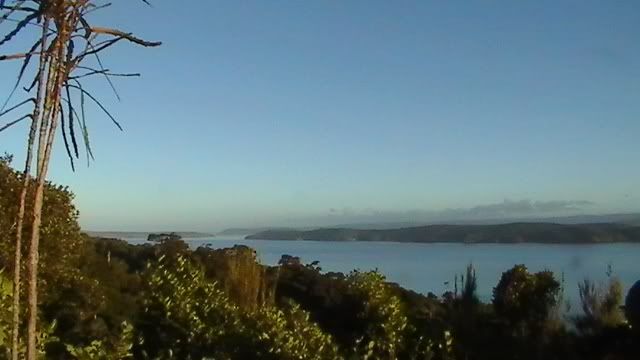
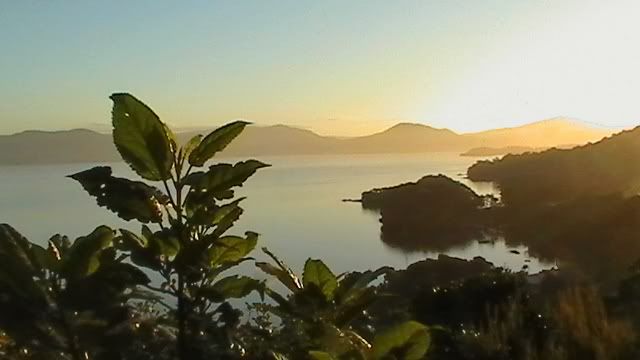
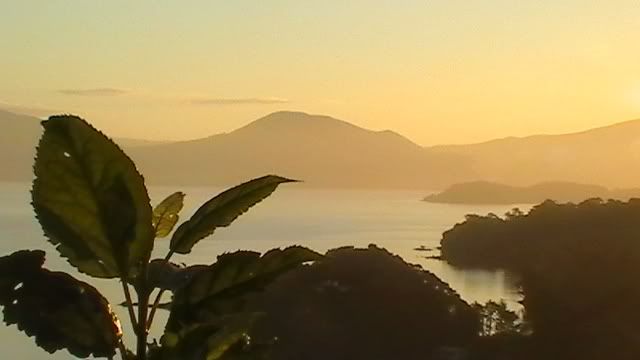
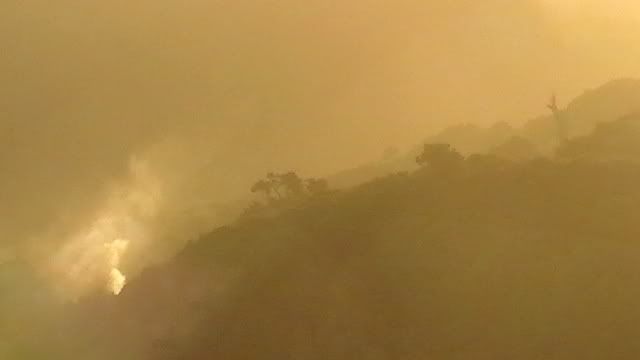
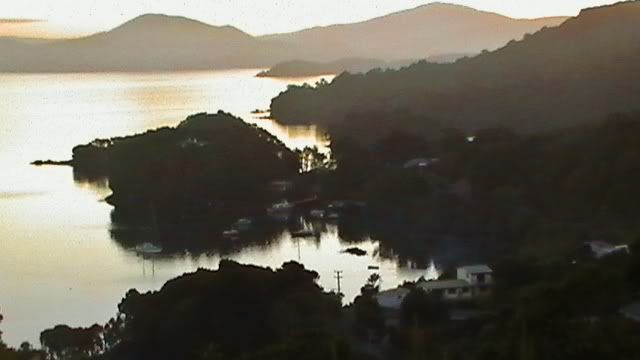
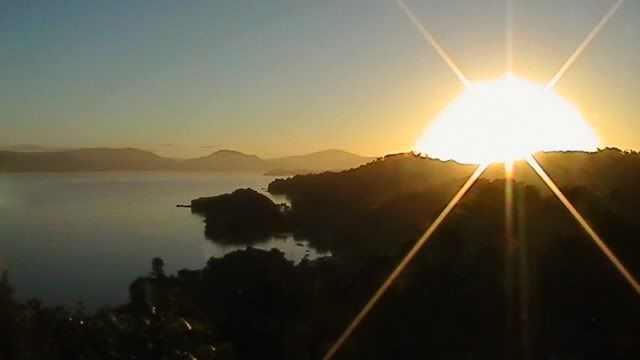
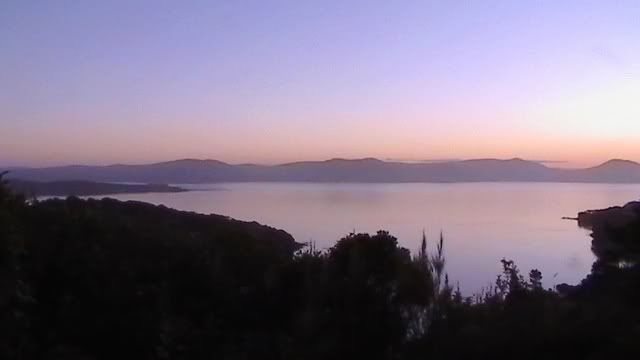

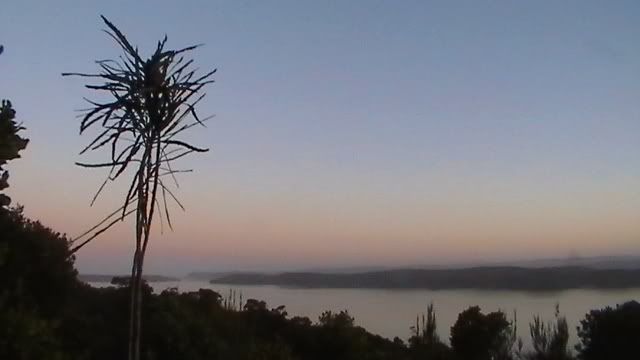
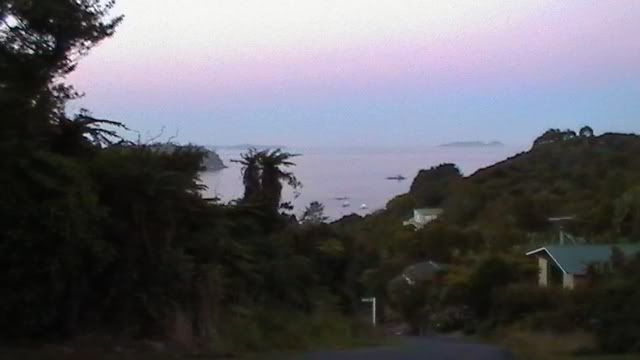
The coolest sunset in the history of awesome
There was one other thing that we had hoped to do that evening, and that was to spot some blue penguins waddling out of the water. Mirva had heard from one of the tour guides that there's one particular spot down by the rocks where they like to come ashore and then toddle across the road with little bellies full of fish. They basically swim around and hunt for food during the day, no bigger than ducks from a distance, and then wade onto the beach just after sunset to hang out. It's actually somewhat of a hazard (well, as much of a hazard as you can have on Stewart Island) because they go right across the road after dark, and since they're all fat and slow from eating, they sometimes just crash there on the warm pavement for a little nap. Anyways, we thought it would be really cute if we could find them, so we hurried back down to the waterfront as soon as it was dark and took our positions along the rocks. As much as we wanted to see them, however, it was really cold, and the freezing temperatures eventually forced us to call it a night before they arrived. In our defense, though, we made it nearly an hour out of stubbornness. We may have actually missed them, or maybe they don't come out every night. In either case, we didn't have enough information to justify standing out there all night to wait. So we decided to slowly make our way back to the hostel and have the last of our food supplies - ramen and oatmeal.
As we headed back to the backpackers, we couldn't help but notice several kakas flying overhead, occasionally perched on someone's roof or yakking away amongst themselves. Very cute. It was a great way to end the evening, so I'll leave you guys with that for now. Next time: more exploring of the island outside of Oban! Thanks for staying with me through the novel!
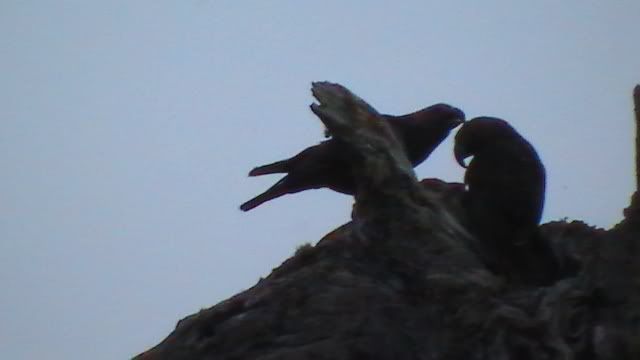
The kakas bid you a good night
The way it works with Stray is that you have the option of doing Stewart Island if you want, but it’s not really part of the major route. Everyone not going onto the island stays behind in Invercargill for the day, the last major town on the South Island. It’s a nice enough place, but there’s really not much in Invercargill. Has anyone seen the movie World’s Fastest Indian with Anthony Hopkins? Yeah, it’s a really obscure, underrated film, but it’s about an old guy on a beat-up motorcycle trying to top the land-speed record in Utah. Really nice, inspirational film. Anyways, the real-life character behind that story was from Invercargill, so he was something of a legend there. If I’d had time to explore around the city a bit, I would’ve tried to find the museum where they keep his bike, but we were literally only stopped there for coffee. It would’ve made more sense to just drop all the Invercargill people off there and take the few people going on to Bluff, but I guess the hostel wasn’t ready yet or something. It was only 10 o’ clock in the morning, so that’s understandable, I suppose.

The tagline for World's Fastest Indian
I was pressed for time in Invercargill because Stewart Island is a little bit…insular, to say the least, and doesn’t have a bank. At all. It’s really only one small township of 400 permanent residents with one general store, a weekly postal service by boat, and just a kilometer or two of paved road. Due to this, I had to take out quite a large sum of cash in Invercargill because there’s no guarantee of Eftpos cards working on the island. The only problem with this plan was that there didn’t seem to be a Westpac bank anywhere near the main courtyard area we were parked at. They had ASB, BNZ, ANZ, KiwiBank, National, and even a Western Union on the same block, but no Westpac. So I had to literally jog four blocks before I spotted one and then race back to the bus before they left without me. Therefore, my impression of downtown Invercargill was one large blur of buildings as I ran past them.




Downtown Invercargill
I was able to look at a cool clock tower in the main square, though. When it chimes the hour, you can see all of the little gears going around inside because it has a see-through panel at the base. I managed to snag a quick scone and coffee while watching that. There was one really strange thing going on, though. For some inexplicable reason, the entire breadth of Invercargill was covered with American flags. I felt like I was back in the States…for Fourth of July weekend. It was so gaudy and over-the-top that the whole thing was very surreal. EDIT: Okay, I just looked it up online and found out that it's some sort of event called AmeriCARna, where a bunch of people who own American classic cars drive up and down the country on a giant road trip. Ah, the wonders of the internet. Then it was back on the road again to make in time for the ferry.



Clock tower plaza of Invercargill
I have to say that the Southland area of New Zealand is quite different from the rest of the country. If I had to compare it some other place, I think it would have to be Montana or Wyoming, even though I’ve never been to either of those places personally. Geographically, it reminds me a lot of the area around Sacramento - that flat, farmland kind of terrain with lots of rustic houses and silos all over the place. The people in the area, however, are more of the “hardy high country folk” variety that you get in certain Australian movies about horseback riding. If you order a cappuccino or something fancy like that, they kind of look at you like you’re some sort of lunatic who wandered in off the street. On the way up to Christchurch, I ran into an honest-to-God sheep blockage taking up the road as far as the eye can see, but that’s a story for another few posts.
The little town of Bluff is the absolute last town on the South Island and is known for one thing and one thing only: oysters. Each year, there’s a big oyster festival that people travel at least dozens of kilometers for, and the running joke is that nine months after the festival, the maternity ward in the local hospital has its busiest month of the year. It’s a quaint little harbor town with lots of fish, boats, and sea spray, and we got there just in time to take in a bit of the scenery before the ferry arrived. It was a bit of a sad moment, however, because it meant saying goodbye to the last stragglers of my original Stray bus crew. With the exception of Mirva, they were all staying overnight in Invercargill before moving on to Rangitata, so it was the last I’d see of all of them. Since they’d all been gradually trickling away anyway, though, it wasn’t as bad as it could’ve been.




The quiet town of Bluff
Anyways, the bus eventually drove off, and we all exchanged a few bittersweet waves before they disappeared from sight. Then it was just me and Mirva waiting around for the ferry in the harbor. During this time, I happened to mention to her how I’d heard about the great sea kayaking that can be found in Stewart Island. I’d wanted to go when I was in Abel Tasman, but since I was only staying there for one night, I was limited on what I could do. Back then, a woman at the travel desk had recommended Stewart Island since it supposedly has these great jungle area with the ocean going right into the trees, so I’d not gone sea kayaking anywhere else in the assumption that I should save it up for Stewart Island. Now, immediately after relaying this to Mirva, I happened to look over my shoulder and see this absolutely massive poster of a great white shark attacking someone in a shark cage. …yeah, okay. I didn’t let that put me off. So, right, yeah, apparently they have shark cages available for people with a death wish. That’s cool. It’s not like there are a ton of great whites around, and I’m sure they’re way, way out to sea. Surely nowhere near the beaches or anything like that. What then ensued was a gradual decline of hope which was almost comical in nature. First, the skipper welcomed us aboard by informing us that Stewart Island is, in fact, the third most common place in the world to find Great White Sharks. ...okaaay, that's really not good, but I was still keen. Then he elaborated by saying that it was going to be especially bad that week because scientists were planning on tagging them for research, thereby attracting them even closer to land than usual. Huh. Finally, as the icing on the cake, the guy at the tourist information center told me that, oh yeah, they actually swim around pretty close to shore and are known to hang out right next to town. That does it. Needless to say, I did not go sea kayaking at Stewart Island, even though I'm sure it would've been amazing. Oh well.
Back to the ferry. The ride itself was pretty standard with us looking out at the ocean through the windows and our guide pointing out various landmarks. It took roughly an hour to cross the Foveaux Strait to the island, which is 22 nautical miles or 39 kilometers off the shore from the South Island. While we're in transit, I might as well tell you guys a little bit about Stewart Island, huh? The actual Maori name for it is "Rakiura," which means "The isle of the Glowing Skies." This is probably because some of the best sunsets in the world can be seen from Stewart Island, especially when the Southern Lights are in effect. Yeah, you know that little thing called the Northern Lights? Well, due to an anomaly in the magnetic latitude contours (I know, right?), it's the perfect spot for seeing the Aurora Australis, its cousin, when a magnetic storm is in the area. Here's an image of it that I borrowed from Google.

Southern Lights of Rakiura
Another reason it might be called "Glowing Skies" because it's supposed to signify this dude named Rakitamau getting rejected by a pretty girl. I guess this guy asked the island chief for the hand of one of his daughters but was refused. When he asked about the second daughter, he was rejected again, so he was forever embarrassed about the whole thing. Personally, I think he should just suck it up and move on, but I guess he's a bit mopey or something. One of the most popular Maori creation stories about New Zealand involves a guy named Maui fishing around with his brothers. With a magical jawbone as a hook, he managed to catch a massive fish and pull it up to the surface. That fish became the North Island, and his great canoe became the South Island. Stewart Island was supposed to be the anchor stone of his canoe. If you look at maps of New Zealand and tilt your head a bit, you can kind of see where they were coming from. Anyways, in tribute to this famous story, there's a giant chain sculpture that starts at Bluff, disappears down into the ocean, and then reappears on Stewart Island.


New Zealand as the canoe, big fish, and anchor, with the chain connecting it all
Today, the only real town on Stewart Island is a place called Oban, which also goes by the name of Halfmoon Bay. Back in the 1840s, a few hardy settlers tried to colonize other parts of island and build saw mills throughout the area, but they were all eventually abandoned. Oban was the only one to actually survive into the present, but there are apparently old, rusty buildings scattered across the island where the old settlements used to be. Mainly, though, Stewart Island is a wildlife sanctuary that has come to represent what New Zealand used to look like thousands of years ago, before humans came and messed it up. The main part of the island has been contaminated with various flora and fauna not native to New Zealand, just like the rest of the country, part there are several other minor islands that have been pretty much completely preserved. Ulva Island is the most well-known one, but I'll go more into that on Part III. Above all else, Stewart Island is the one place where you could possibly run into a kiwi bird in the wild, but they're so shy and hard to spot that it's almost impossible unless you know where to look. Locals are very strict about enforcing a ban on possums, rats, and feral cats to protect the habitat there.
Okay, enough of the history lesson. We arrived at Oban just around 12:30 or 1:00 and managed to locate our bags without any obvious difficulty. I had heard about a really nice hostel called Bunkers Backpackers with free wireless internet somewhere on the island, but they hadn't answered any of my phone calls when I'd tried to get in touch with them in Te Anau, so I had to settle for Stewart Island Backpackers for the first night instead. I managed to walk down to Bunkers later in the day and reserve the next two nights, however, so that was a good move. Mirva, however, had a bit of a problem. Unlike me, she was on a deadline and was only staying on the island for one night. Her whole reason for visiting Stewart Island was to find some friends of hers who were working at the only restaurant in town. I want to say they were from Austria, but they could've been German as well. Anyways, she just wanted to pop in and say hi to them, so that meant being gone early the next morning. Since it was already midday, that left her with only a few options. Our first order of business was to check in at the hostel and drop our things off there, but that didn't take long at all since you can see the entire town in all of fifteen minutes. Then we walked back to the information center to plan the afternoon's activities. She had been hoping to see Ulva Island or sign up for a hiking tour, but, unfortunately, most of the tours were already gone for the day or needed a minimum of three people to get going. She was understandably bummed about that because Stray hadn't mentioned anything about most activities taking place in the morning, but there really wasn't anything that she could do. The only thing still available to her was a bus tour around the main parts of town for an hour and a half, which was around $50-$60 dollars. She asked if I wanted to come, too, but I decided against it since I'd have three days to see the town and didn't want to shell out that kind of money for the sake of polite company. Luckily, she understood and decided to go do that for the first bit of the afternoon, leaving me to my own devices for exploration time.
As I mentioned before, the main part of the town consists of a general store, one or two small cafes, the tourist information center, and a sprinkling of other businesses thrown into the mix. Mirva's friends worked at the South Sea Hotel right on the waterfront, but their menu was far too expensive for my tastes. I was more partial to the Fish and Chips shop down the beach run by a cute Asian woman and her very tall German boyfriend. Oban has this great "island life" vibe to it where time seems to move at a slower pace. Just like any isolated village, everyone knows everyone's business, no one seems in any particular hurry, and people just tend to appreciate the simpler things in life more often. One example of this was the large blackboard hanging outside of the general store. After asking around town a bit, I learned that the owner has a list of everyone's birthday on the island, so whenever that day rolls around, he writes their name and age down on the sign as a sort of congratulations. Then there's the giant chess set right across from the beach for the locals to entertain themselves with and the multitude of small boats floating in the harbor nearby. All in all, it was a very peaceful atmosphere.




The hotel, general store, and the beginning of the waterfront
I spent a good chunk of that time in the tourist office, planning out my time wisely and deciding on the best walks to take around the island. The big, multi-day hikes were out, obviously, but I managed to glean which tracks were the best by asking some of the local guides for advice. After marking down the possibilities on my map, I tucked that into my back pocket for the next day. That gave me the rest of the afternoon to enjoy Oban and eventually meet up with Mirva again. I desperately wanted to sign myself up for the kiwi bird night tour on Ulva Island, but that was way out of my price range. Considering that they only come out in the middle of the night and are terrified of people, I had virtually no chance of getting a picture of one without flash. My camera works marginally in full daylight, so there's no way that it would work in pitch darkness. Oh well. I held out hope for accidentally running across one instead - after all, they do sometimes wander close to town on occasion. Onwards.




The giant chess set, fish and chips shop, and a few back roads




Getting a bit deeper into town
Another thing I absolutely loved about the quiet, island lifestyle was the sense of humor involved. Locals there know that they were way out in the middle of nowhere and that they do things a bit differently from the rest of the world, so they make no secret of poking fun at themselves. After all, the guy that owns your hostel might also be the guy that does sea kayaking and runs the bus tour company with his brother, and his wife might double as a tour guide when she's not running the accounts. With that level of personal involvement, most people tend to know just a little of everything that goes on in town. As a result, they like to mess with tourists and gossip like crazy. Here are just a few of the humorous things I found scattered across the general area of Oban. I would try to describe them, but I think they rather speak for themselves.






Oh, New Zealand, how I love you
Since I was stalling for Mirva, I stayed around the general beach area and didn't go that far into the surrounding forest. I was hoping that she'd be down for heading up to a spot called Observation Rock around twilight time because it's supposed to be the best location for watching the sunset. With that tentative plan in mind, I dawdled around town and took some more pretty pictures of the water. There was a war memorial for fallen soldiers right on the beach that had a nice inscription on it, so I snapped a few shots of that. I still can't believe the ratio for war casualties in New Zealand. Literally every town has some sort of tribute marker because NZ has incredibly high death rate for the various wars it has been involved in. WWI was around a 58% casualty rate, and New Zealand had the highest in the commonwealth for WWII, so a lot of families were affected.
Another thing that I found in abundance along the beach was the friendly oyster catcher. They're these cute little black and white birds with long, orange bills for breaking open mollusks, and they were all over the place. When you're walking along the beaches of the South Island (where there are tons of them as well), you have to be very careful not to step on any eggs because they apparently nest in the sand.







Ocean, oyster catchers, and memorials
Before long, it was time to reunite with Mirva following the completion of her bus tour. Luckily, she managed to enjoy the ride and learn as much as she could about the island in a limited amount of time and was past her disappointment in not being able to reschedule her ferry departure for a later date. She was down with my idea for sunset watching later in the evening, so we deciding to do some walking through the short forest paths nearby to kill some time first. After consulting with my map, I decided that the best one to start with was the Fuschia Walk just behind our hostel leading up towards Observation Rock. Again, the name comes from that Maori loser who got dumped...twice. By that point, it was about mid-afternoon, so we had at least three hours of exploring to do before sunset. The Fuschia Walk is supposed to take all of fifteen minutes because it's just a little pathway connecting the back end of town to a grassy field area, but we decided to start there and then work our way around the bay before dinner time. You can go pretty much anywhere in New Zealand and find some amazing forests or jungles, but I think Stewart Island takes the cake when it comes to the exotic. In the entire time that I was there, I could never really compare it to anywhere else I've been to because the trees and landscape were so unique. The pictures don't really do the place justice, but I'll give you guys a taste.






Coming out of the Fuchsia Walk and walking through the trees
I have tons of other forest shots from throughout my time on the island, but I'll save those for the next two posts so that I don't get ahead of myself. After walking around the back part of town, Mirva and I hiked a bit further up hill and found the location for Observation Rock. We made a quick note of where it was so that we could find it again later and then continued past it towards Golden Bay. That particular walk is the start of another longer trek out to Deep Bay or Ringa-Ringa Point, but we didn't have four hours on our hands. A lot of boats launch out from Golden Bay or dock there when they're not in use. I think the mussel farms and fishing spots are nearby as well, so a lot of local fishermen hang out around Golden Bay, too. Anyways, the sun was starting to get a bit lower in the sky, so we had incredible lighting for some scenic views down there. We lingered there for quite a while, actually, just enjoying the tranquility of the water.






Some awesome twilight shots of Golden Bay
After Golden Bay, we decided to keep walking in the general direction of Deep Bay since that path went towards town but ended up turning back after the sun started getting a little too low on the horizon for our comfort level. While he were walking along, however, we were incredibly fortunate to stumble onto two kakas playing in a tree directly above us. Now, kakas are large parrot-like birds that are extremely cute and playful. They basically enjoy destroying trees with their claws and making all sorts of racket. After sunset, they are everywhere on Stewart Island, and their war cries remain the predominate soundtrack of the place when I try to remember what it was like. They make this sort of screechy, warbling noise that sounds like a cross between a maraca being shaken and Gilbert Gottfried being strangled, but it's actually not quite as annoying as you would think. Anyways, as we were chatting away, I happened to glance ahead of us on the trail and see another backpackers girl transfixed by something in the trees up ahead. With a sense of something is up, I did the full closed fist "halt" gesture that's in every cliched action flick ever and cut off what I was saying mid-sentence. And, sure enough, my instincts paid off because they stayed put even after we'd finished approaching. Did I mention that they were cute? Adorable, even. They just continued happily tearing this poor branch apart while we stood underneath and snapped an insane amount of pictures. Then they sidled up against each other and "kissed" a little bit with their beaks. Aww. I don't know why I didn't take a video clip - must have been too transfixed by our luck.






Kaka birds being adorable
We could have stayed there and watched them for ages, but we decided to give the cute couple some privacy and continue on the trail for a ways. Since we wanted to be in place for sunset, however, we didn't get that much further down the path. We went far enough to get some scenic shots of the water through the trees before retracing our steps and heading back towards Golden Bay and Observation Rock. By the way, it's not actually a rock - more of a gradual hill that spirals up around several backyards with a nice view of the western side of the island. We made up there without any problems, and there were only two other people up there, so it wasn't exactly quiet. Then it was time to just sit back and wait.




Between Golden Bay and Deep Bay
Luckily, we didn't have to wait very long. Within half an hour or so, we were in the perfect spot to relax and take pictures at our leisure every few seconds. That's actually part of the reason why this post was such a pain to finish - I literally have about fifty identical shots of the same view, so it was extremely difficult to sort through them and pick the top ones. I think I've finally narrowed it down, though, so feel free to browse through some of the best photos. One of the coolest things that I noticed was this faint pillar of steam/smoke rising from one of the ridges. At first, I assumed that it was someone's chimney across the water or maybe a natural hot spring releasing some mist in the air, but then I zoomed in and realized that it was some sort of natural vapor rising straight out of the ground, made visible by the fading light. Can anyone explain why this might happen? I'm not exactly a scientist, so that was pretty cool, in my opinion. Before long, however, the sun gradually sank below one ridge in particular, and the sky began to fade into more purples and blues. We stayed up there just a little longer, admiring the scenery and enjoying the tranquility, but then it was time to head back towards the town.










The coolest sunset in the history of awesome
There was one other thing that we had hoped to do that evening, and that was to spot some blue penguins waddling out of the water. Mirva had heard from one of the tour guides that there's one particular spot down by the rocks where they like to come ashore and then toddle across the road with little bellies full of fish. They basically swim around and hunt for food during the day, no bigger than ducks from a distance, and then wade onto the beach just after sunset to hang out. It's actually somewhat of a hazard (well, as much of a hazard as you can have on Stewart Island) because they go right across the road after dark, and since they're all fat and slow from eating, they sometimes just crash there on the warm pavement for a little nap. Anyways, we thought it would be really cute if we could find them, so we hurried back down to the waterfront as soon as it was dark and took our positions along the rocks. As much as we wanted to see them, however, it was really cold, and the freezing temperatures eventually forced us to call it a night before they arrived. In our defense, though, we made it nearly an hour out of stubbornness. We may have actually missed them, or maybe they don't come out every night. In either case, we didn't have enough information to justify standing out there all night to wait. So we decided to slowly make our way back to the hostel and have the last of our food supplies - ramen and oatmeal.
As we headed back to the backpackers, we couldn't help but notice several kakas flying overhead, occasionally perched on someone's roof or yakking away amongst themselves. Very cute. It was a great way to end the evening, so I'll leave you guys with that for now. Next time: more exploring of the island outside of Oban! Thanks for staying with me through the novel!

The kakas bid you a good night